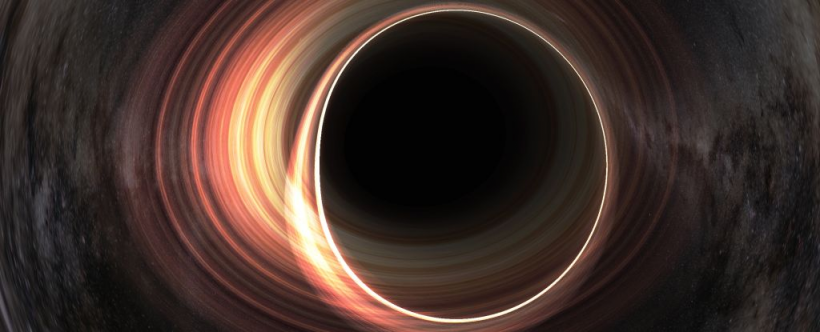A new type of black hole analog might teach us something about the enigmatic radiation released by the genuine thing. A team of scientists found the equivalent of Hawking radiation - particles created from disruptions in the quantum states induced by the black hole's split in spacetime - using a line of atoms in solitary to recreate the singularity of a black hole.
This, they claim, might help settle the conflict between two currently incompatible frameworks for explaining the Universe: the general theory of relativity, which defines gravity's behavior as a continuum field known as spacetime, and quantum mechanics, which also governs the relationship of discrete particles using probability mathematics.
These two incompatible theories must somehow coexist to form a unified theory of quantum gravity that could be applied globally. This is when black holes are at play, probably the strangest and most extreme things in the universe. A Science Alert report states that these huge objects are so dense that no velocity in the Universe is adequate for escape beyond a specific distance from the black hole's mass center. Not even the speed of light will suffice.
Hawking's Disruption to Quantum Fluctuation
The event horizon is a distance that varies with the size of the black hole. Scientists can only speculate what occurs when an item passes its border because nothing returns with essential information about its fate. However, Stephen Hawking postulated in 1974 that disruptions to quantum fluctuations generated by the singularity result in a sort of emission very comparable to thermal radiation.
If Hawking radiation develops, it is far too weak for humans to detect. It's conceivable we'll never be able to separate it from the Universe's hissing static. However, the team may investigate its features in laboratory conditions by constructing black hole analogs.
This has been previously done, but a team led by Lotte Mertens of the University of Amsterdam in the Netherlands has achieved something unique. A one-dimensional network of atoms functioned as a conduit for electrons to 'jump' from one point to another. The scientists were able to force some features to vanish by manipulating the simplicity with which this bouncing could occur, thereby generating a form of the event horizon that conflicted with the wave-like structure of the electrons.

A new type of black hole analog might teach us something about the enigmatic radiation released by the genuine thing. A team of scientists found the equivalent of Hawking radiation - particles created from disruptions in the quantum states induced by the black hole's split in spacetime - using a line of atoms in solitary to recreate the singularity of a black hole.
ALSO READ: Humans Too Violent and Dangerous, Scaring Other Beings From Visiting Earth, Expert Claims
Theoretical Expectations of Lab-made Black Hole
The team remarked that the action of this simulated event horizon generated a temperature rise that exceeded theoretical expectations of the comparable black hole system, but only when a portion of the chain stretched beyond the event horizon. This might imply that the entanglement of particles across the event horizon is important in the generation of Hawking radiation.
The projected Hawking radiation was still only thermal over a limited range of hop amplitudes and under experiments that began by simulating a 'flat' type of spacetime. This shows that Hawking radiation would only be thermal under some circumstances, such as when the warp of space-time changes owing to gravity.
It's uncertain what this implies for quantum gravity, however, the model provides a tool to explore the genesis of Hawking radiation in an ecosystem unaffected by the chaotic dynamics of black hole creation. Since it is so basic, it may be used in a variety of experimental setups, according to the researchers. Their findings were reported in Physical Review Research.
Based on the researcher's analysis, this can pave the way for further study into fundamental quantum-mechanical characteristics such as gravity as well as curved spacetimes in diverse condensed matter situations.
RELATED ARTICLE: Stephen Hawking's Time Travel Claim: Here's What The Late Cosmologist Said
Check out more news and information on Physics in Science Times.



![Earth's Quasi-Moon Kamo‘oalewa Could Originate From Lunar Surface Not Asteroid Belt [Study]](https://1721181113.rsc.cdn77.org/data/thumbs/full/53275/89/56/50/40/earths-quasi-moon-kamo-oalewa-could-originate-from-lunar-surface-not-asteroid-belt-study.png)










